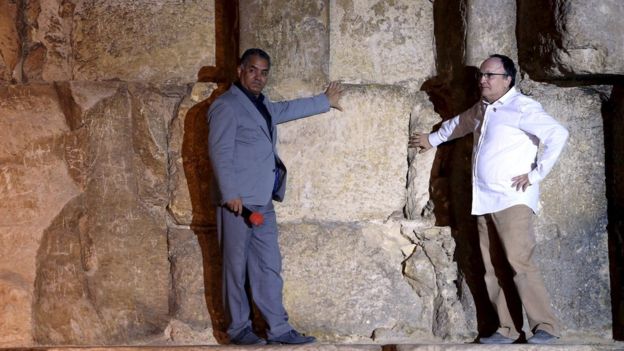In the pyramids of Giza, scientists have observed a number of “thermal anomalies” that they are yet to explain, reports the BBC.
RELATED: ARCHAEOLOGISTS DISCOVER TOMB OF UNKNOWN QUEEN IN EGYPT
Scientists from Egypt, Canada, France and Japan set up infrared cameras for their Operation Scan Pyramids project at the Great Pyramid to see whether they can locate hidden chambers.
And while they are yet to locate any hidden chambers in the tombs of Khufu, Khafre, and Menkaure — all built between 2613 and 2494 BC — they have noticed that as the sun heats up and cools down the limestone structures at sunrise and sunset, respectively, three adjacent stones at the bottom of the pyramids consistently have higher temperatures (pictured) than the rest of the structure.
The upper half of the Great Pyramid was also found to have these “thermal anomalies.”
In a statement this week, the Egyptian Antiquities Ministry theorized that the thermal anomalies could be due to the “presence of voids behind the surface [or] internal air currents.”
And Antiquities Minister Mamdouh al-Damati (pictured) explained about the Pyramid of Khufu (a.k.a. the Great Pyramid) during his presentation on Monday, “The first row of the pyramid’s stones are all uniform, then we come here and find that there’s a difference in the formation.”
Scientists plan to continue investigating these pyramids for the next year.
RELATED: Egyptian Mummification Procedure May Date Back 1,500 Years Earlier Than Previously Thought













